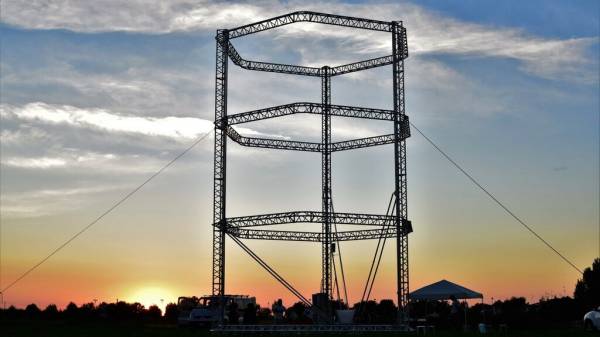Big Delta has a 20-foot-wide metal body and a rotating printing nozzle that doubles as a materials mixer to keep printing materials homogeneous. It will build structures layer-by-layer using construction material funnelled through the nozzle. It is capable of printing beams up to three metres long.
The printer can function on less than 100 watts of power, and the goal is to use Big Delta to create inexpensive housing, using cheap local materials such as mud and clay, structurally reinforced with chemical additives. These features will prove especially valuable in providing quick relief to warzones, or to countries impacted by natural disasters such as earthquakes, floods and storms. And WASP is working on a way to add an insect repellent to its structures.
Big Delta can print using cement, however sustainable 3D printing with natural materials is substantially less damaging to the environment than cement or concrete, which generate excessive levels of CO2.
WASP says there’s also a growing interest in using Big Delta to address the global housing crisis by printing low-cost homes in more heavily populated locations. The United Nations has estimated that to shelter the world’s rising population, an average of 100,000 new homes are needed on a daily basis over the next 15 years.
3D printing offers enormous flexibility in terms of home design, shape, size and choice of materials. The town of Iglesias, Sardinia, has already expressed interest, and looks set to be the first location for homes created using Big Delta.
The ability to quickly create large complex structures, with flexible designs, on a tight budget, would also be a huge advantage in space, or on any planet that humans may wish to colonise in the future.
And back on Earth, the worldwide market for 3D printing is forecast to expand to $17 billion by 2020, with energy and jewellery sectors expected to experience the strongest growth.


